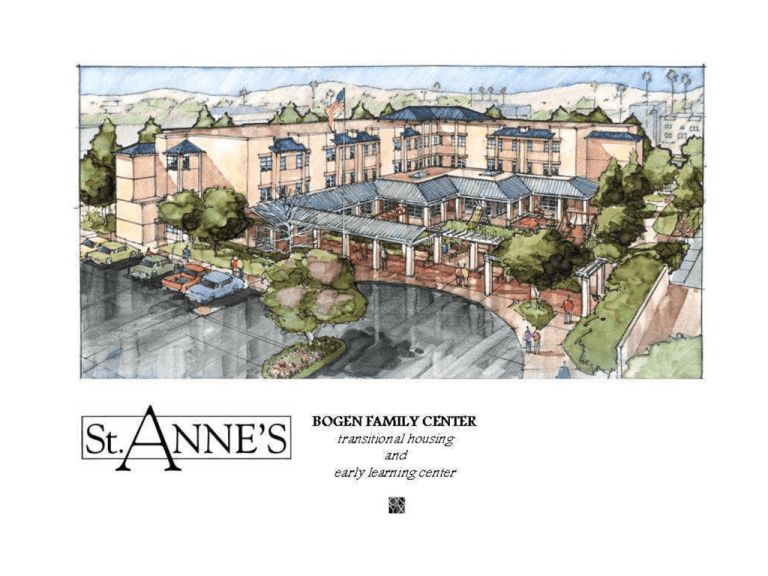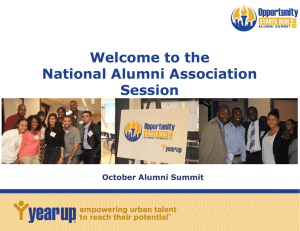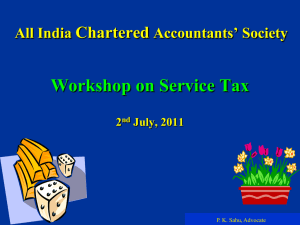St. Anne`s ~ Bogen Family Center - THP-Plus
advertisement

St. Anne’s ~ The Bogen Family Center A single site model serving 40 pregnant or parenting youth ages 18 to 24 years old Services offered on-site In-home Case Management Services Child care In-home Pregnancy and Parenting Support Mental Health Services High School Full Service Medical Clinic Transitional Housing Program ORGANIZATIONAL CHART July 1, 2010 Lauri Collier SENIOR DIRECTOR OF RESIDENTIAL PROGRAMS AND SUPPORT SERVICES DIRECTOR OF RESIDENTIAL TREATMENT PROGRAM Amber Goggia DIRECTOR OF TRANSITIONAL HOUSING LEAD PROGRAM ASSISTANT PM PROGRAM ASSISTANT (1 FTE) ON PROGRAM ASSISTANT (1FTE) DIRECTOR OF SUPPORT SERVICES CLINICAL SUPERVISOR FAMILY ADVOCATE (1 FTE) FAMILY ADVOCATE (1 FTE) FAMILY ADVOCATE (1 FTE) PROPERTY MANAGER FAMILY ADVOCATE (.5 FTE) St. Anne’s 2010 Discharge Data to Permanent Housing 34 young mothers have been discharged from the program 66% (23 of 34) were discharged into Permanent Housing 43% (10 of 23) were discharged into Permanent Affordable Housing 56% (12 of 23) were discharged into Permanent Housing, usually with a family member or father of child. 29% (10 of 34) were discharged into another transitional living program (6 of the 10 discharged youth were when THP-Plus funding ended in January 2010) 2% (1 of 34) were discharged into a substance abuse rehabilitation program (and re-entered the program) St. Anne’s ~ The Bogen Family Center Email: lcollier@stannes.org Telephone: 213.381.2931 x246 United Friends of the Children Pathways Transitional Living Program United Friends of the Children History Founded in 1979 Dedicated to supporting foster youth in the journey to becoming successful, independent adults Partners in first transitional housing program in the nation Overall Philosophy Belief that consistent relationships over time have the greatest impact on youth Importance of quality programming College Sponsorship & College Readiness Programs College Readiness Program: 7th–12th graders College Sponsorship Program: 5 years of financial and other support toward college graduation Pathways Transitional Housing Program In operation since 2002 18-24 months (including AIT) Alumni Program: services continue indefinitely Pathways THP Basic Facts 60 beds Five apartments complexes in LA County Two new sites under construction Long Beach – projected to be complete July 2011 (13 beds) Whittier – projected to be complete spring 2012 (10 beds) New sites will bring core program capacity to 83 beds Pathways Program Highlights Identify and build on individual strengths Youth receptivity as a key ingredient for change Empowerment model that tolerates mistakes and requires responsibility Importance of a consistent counselorresident relationship Goals Prevent emancipated foster youth who are at imminent risk of homelessness from becoming homeless Offer dynamic and comprehensive services to emancipated youth who are receptive to a program with enriched service offerings beyond housing Provide youth with the necessary life skills and emotional support to become financially self-supporting and emotionally stable Serve as a model for programs serving former foster care youth and disseminate information learned from the program to interested service providers Pathways Transition Program Transition team Property Manager, Advocacy Counselor and resident Transition discussions begin immediately Monthly transition meetings begin in 12th month of program Discuss income vs. reality of housing costs Planning for AIT Review potential road blocks Credit status Rent payment history Budget Alumni Program Tracking outcomes is essential and youth need our ongoing commitment Services and support for all youth, not just program graduates There must be something of value for youth to maintain connection At UFC, the value is multi-faceted A relationship that they care about Workshops, activities, and events designed for alumni by alumni Emergency support when times are tough Alumni Services Alumni Youth Advocate Serves as the point of contact between Pathways alumni and the program Ongoing support for mental health services Internship opportunities and career support Emergency financial support Alumni Events Annual Alumni Weekend Retreat Quarterly Career Dinner Summer Barbecue Thanksgiving and Christmas Events Internet social networking pages (Facebook and My Space) Alumni Newsletter Follow Up Service Forms are filled out by alumni at all events Current address Employment status (full time or part-time) Educational status (where in school) Do they have children? Are they expecting children Permanent Housing Partnerships Casa Dominguez 7 units, 10 beds Statistics The moment of transition does not tell the whole story. Since 2002: In contact with 74% of all Pathways participants (even those who did not complete) As of June 2010, 89% in stable housing 74% employed How Do We Do It? Flexible funding streams Belief that an ongoing investment in youth after the program is a good investment We said we were family, it is our responsibility to be there for them over time Hire the right people – creative, caring, committed, and skilled



